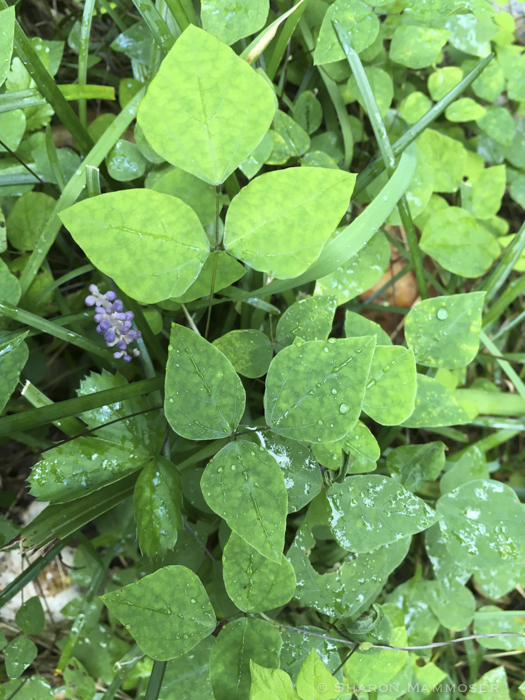Did the three-leafed vine in last week’s puzzler look familiar? Did you recognize it from walks in the woods? Is is called Hog Peanut, Amphicarpaea bracteata.

This vine is native to central and eastern North America. Unlike some of the other vines we have been talking about, that grow by way of tendrils, this plant winds its way around around things instead. It is usually found in partial shade or even in full shade and can grow 60 feet in a season. It got its common name of hog peanut because it produces a seed, two different seeds in fact, both that are edible and thus attractive to a variety of animals, including wild hogs. The vine also has an edible root as well as two types of flowers, both of which are small and can be seen on the vine in the spring.
Hog peanut creates its own nitrogen through a symbiotic relationship with bacteria in its roots. It is what’s called a nitrogen fixer, producing an excess of nitrogen that will be used by nearby plants.
Its leaves are the host plant to several native butterflies, including: the Silver Spotted Skipper ~( Epargyreus clarus), the Long Tailed Skipper ~ (Urbanus proteus ) and the Gray Hairstreak ~ (Strymon melinus.) Thus, if you have it in your yard, you may want to think about leaving it there if it isn’t strangling other plants in your garden.


